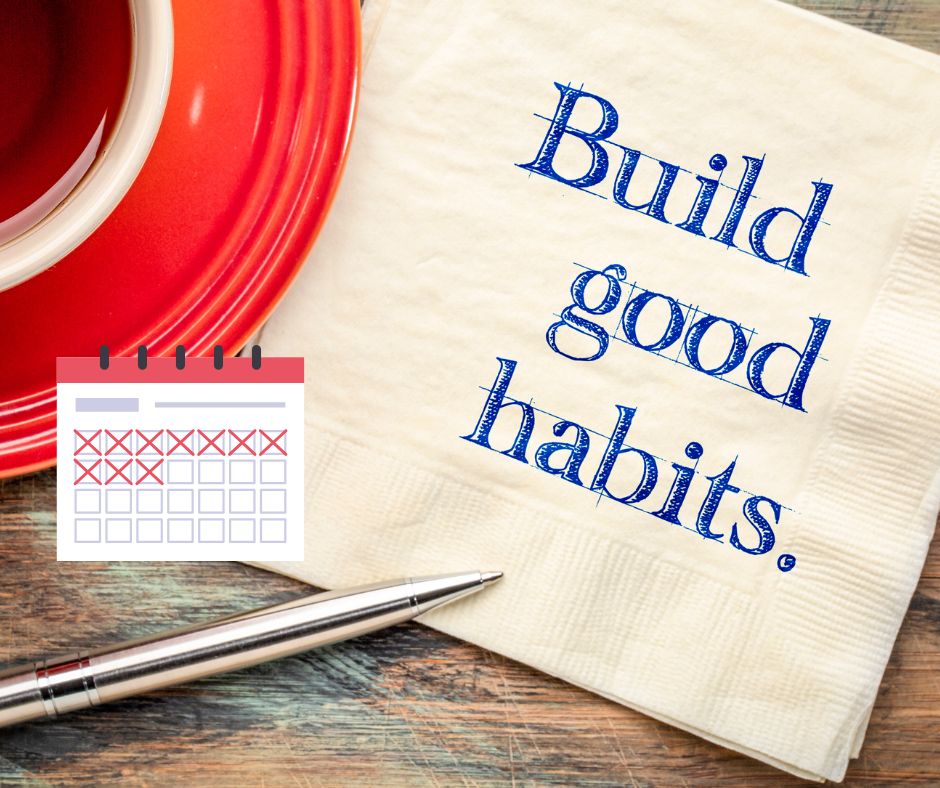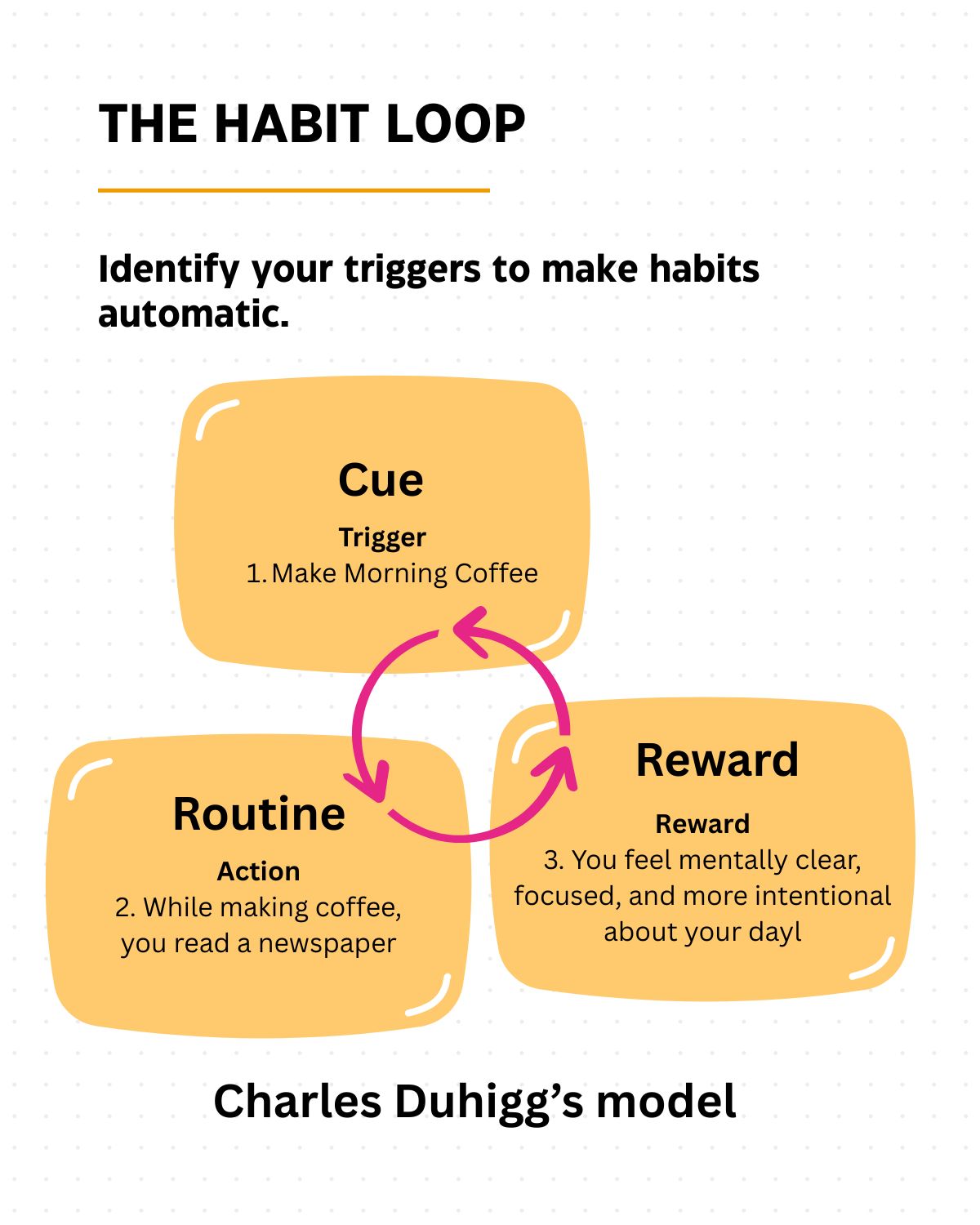How to Build Consistent Daily Habits: A Step-by-Step Guide

Published on: October 28, 2025
Building consistent daily habits is a powerful way to bring positive changes in your life, enhance productivity, and improve overall well-being. Whether your goal is to adopt a new exercise routine, cultivate mindfulness, or improve your nutrition, the key lies in developing habits that last over time. This comprehensive guide will walk you through actionable steps to build strong, lasting habits with scientific backing and practical tips.
Introduction: Why Building Consistent Habits Matters
Our daily habits form the foundation of who we are and what we achieve. Research shows that up to 40-45% of our daily actions are automatic habits, meaning much of what we do is shaped by routines rather than conscious decisions. This is both a blessing and a challenge — it means bad habits can take hold easily, but the same mechanism allows good habits to become automatic if approached correctly.
Creating consistent habits reduces decision fatigue, improves mental clarity, and leads to cumulative positive outcomes—whether in fitness, focus, or personal growth. This article helps you uncover the science and psychology behind habit-building and equips you with clear, practical steps for success.
Step 1: Identify a Clear and Specific Goal
One of the most common pitfalls in habit formation is vague goal-setting. Saying “I want to exercise more” is ambiguous and hard to track. Instead, clarify what “exercise more” means in actionable terms, such as “walk briskly for 20 minutes every morning before breakfast.”
How to set clear goals:
- Use the SMART goal framework: Specific, Measurable, Achievable, Relevant, Time-bound.
- Write down your habit goal in precise language.
- Break larger goals into smaller, manageable behaviors.
For example, if your goal is to meditate, specify, “Meditate for 5 minutes daily upon waking.”
Clarity helps your brain form stronger associations between cues and habits and aids in tracking progress.
Step 2: Anchor Your New Habit to an Existing Routine
Humans are creatures of habit, often triggered by preceding actions or environments. To harness this, anchor your new habit to an existing behavior or event—a psychological technique known as “habit stacking.”
For example:
- After brushing teeth, immediately do your meditation.
- Once you sit down with your morning coffee, journal your goals.
- When you finish lunch, go for a 5-minute walk.
This linking builds mental cues that prompt automatic behavior. Using an existing stable routine as your trigger increases habit formation success substantially.
Step 3: Start Small and Practice Gradual Progression
Small beginnings are crucial. Trying to overhaul your entire lifestyle or forcing ambitious habits may lead to burnout or loss of motivation. Research suggests that starting with easy, bite-sized habits creates early wins that build confidence.
- Begin with the lowest possible effort: Instead of 30 minutes of reading, start at 5 minutes.
- Use the “two-minute rule”: Any new habit should take less than two minutes initially.
- Gradually increase intensity or duration as the habit solidifies—this is called the principle of progressive overload in habit formation.
Starting small ensures you don’t overwhelm your willpower, making consistency feasible and enjoyable.
Step 4: Use Positive Reinforcement to Boost Motivation
Rewards play a vital role in cementing habits. The brain releases dopamine in response to pleasurable experiences, reinforcing connections between behaviors and rewards.
Ways to apply positive reinforcement:
- Give yourself small treats or breaks after completing a habit.
- Maintain a habit journal where you note wins and celebrate milestones.
- Encourage social praise by sharing your progress with friends, family, or communities.
- Use visual progress trackers that provide a satisfying sense of achievement.
Rewards build positive emotional associations around your habit, making the behavior naturally appealing.
Step 5: Track Your Habits Visually
Tracking habit progress is proven to increase adherence. A visual record reminds you of your commitment and provides motivation through visible evidence of your streaks.
Popular tools for habit tracking:
- Habit-tracking apps with reminder features (e.g., HabitPills, Habitica, Streaks).
- Printable habit trackers or bullet journals.
- Simple charts or checklists pinned in a visible location.
Tip: A “don’t break the chain” approach works well—mark every successful day, and the desire to maintain an unbroken streak fuels consistency.
Step 6: Plan for Obstacles and Lapses
No habit journey is without setbacks. Preparing yourself mentally for challenges ensures resilience.
- Identify potential obstacles (busy days, travel, illness).
- Develop fallback plans, like shorter habit versions or alternative timings.
- Practice self-compassion—don’t punish yourself for missed days.
- Use lapses as learning moments, analyze what led to breaks, and adjust your strategy.
Understanding that perfection isn’t necessary promotes long-term commitment instead of all-or-nothing thinking.
Step 7: Create an Environment That Supports Your Habits
Your physical and social environment impacts habit success. Modify your surroundings to make habits easier and more likely.
Environment design tips:
- Remove distractions or temptations to revert to old habits.
- Place reminders or tools for your habit where you see them.
- Surround yourself with supportive peers or communities.
- Use cues like sticky notes, alarms, or habit-specific gear.
A habit-friendly environment lowers friction and keeps motivation steady.
Step 8: Reflect Regularly and Adjust
Reflection is key to sustained growth. Schedule weekly or monthly reviews of your habit progress.
During reflection:
- Assess what’s working well and what isn’t.
- Experiment with tweaks in timing, triggers, or rewards.
- Set new mini-challenges or goals to keep engagement high.
Reflection helps prevent stagnation and keeps habits aligned with your evolving lifestyle.
The Science Behind Habit Formation
Understanding how habits work neurologically empowers better strategies. Habits are formed through a loop:

- Cue: The trigger that initiates the habit.
- Routine: The behavior or action.
- Reward: The benefit or pleasurable feeling from the behavior.
Over time, the brain automates this loop in the basal ganglia, freeing mental energy for other tasks. Strengthening cues and rewards accelerates habit formation.
Neuroplasticity—brain’s ability to rewire—means any habit can be formed or changed at any age through repetition and reinforcement.
HabitPills Tools to Support Your Journey
As you build habits, use complementary tools like HabitPills to:
- Track daily habit progress with easy interfaces.
- Set reminders and notifications.
- Access motivational content and expert tips.
- Join community challenges for accountability.
Behavioral science combined with modern tech provides a robust platform for your transformation.
Conclusion: Your Habit-Building Journey Starts Today
Building consistent daily habits transforms your life in profound ways. Remember these key ideas:
- Set clear, specific goals.
- Hook new habits to your current routines.
- Start small and reward progress.
- Track consistently and reflect often.
- Prepare for obstacles and build a supportive environment.
The path to lasting change is gradual but immensely rewarding. Begin today with one small habit, and with persistence, transform your days, your mindset, and your future.
HabitPills is here to help you every step of the way!


